2023 Dodge Hornet GT Review and Test Drive: No Shrinking Violet
Dodge creates a small SUV with a big personality.
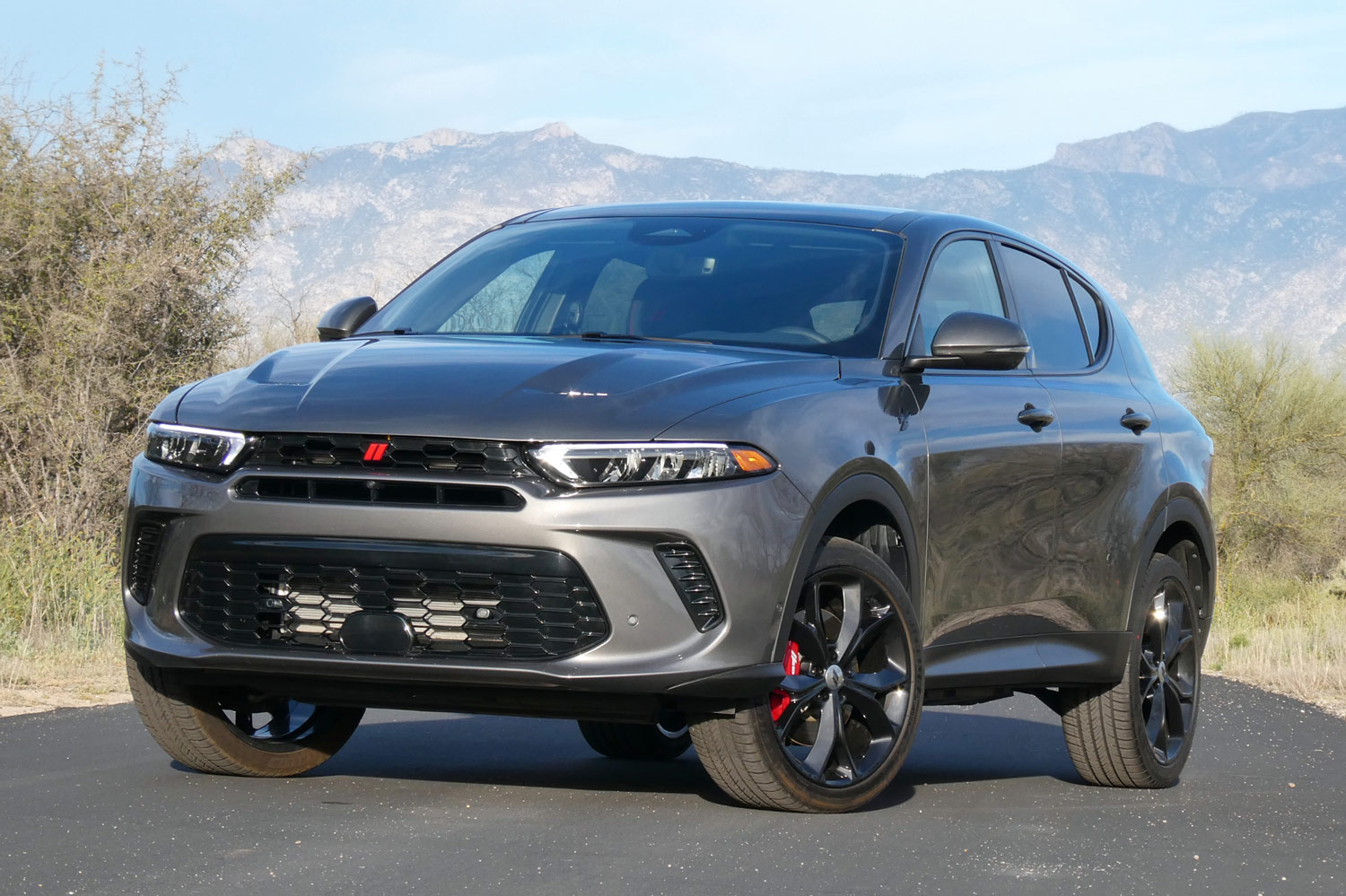 Ron Sessions
Ron Sessions
Americans love trucks, but they're also infatuated with compact crossover SUVs. Last year, the 10 bestselling models in the United States included the Honda CR-V, Tesla Model Y, and Toyota RAV4. All three are compact crossovers and offer an electrified powertrain as standard or optional equipment.
With the all-new 2023 Hornet, Dodge wants a piece of the action. Not only does the Dodge Hornet check the compact crossover SUV box, but it will soon be available as a plug-in hybrid, giving buyers an electrified powertrain option. In addition, the new Hornet is based on the soon-to-arrive Alfa Romeo Tonale. Both are made in Italy, which makes the Hornet an unusual entry with a compelling backstory compared to many rivals in the segment.
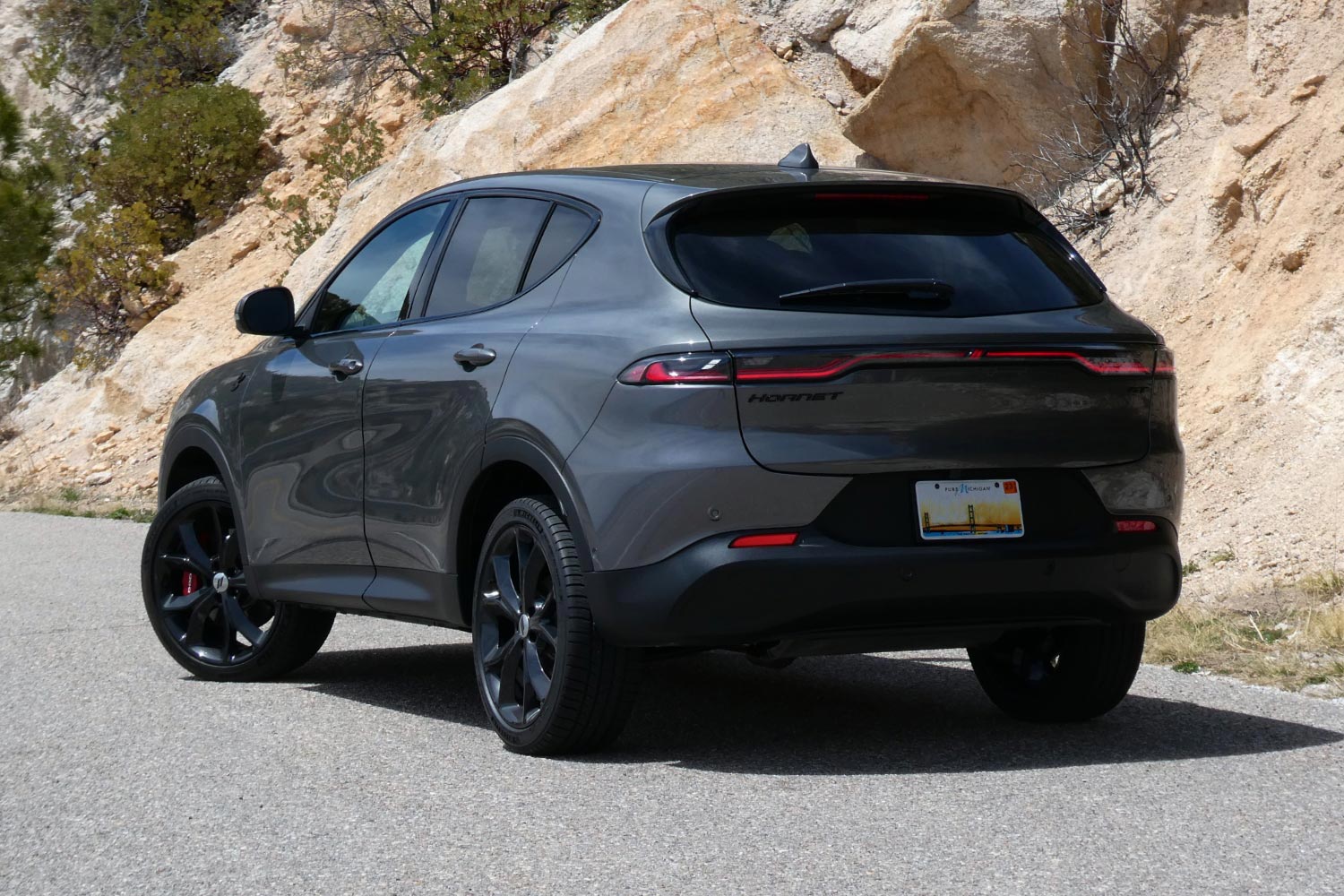 Ron Sessions
Ron Sessions
The 2023 Dodge Hornet GT is currently on sale and comes only with a 268-hp turbocharged 2.0-liter four-cylinder engine, which means it offers more power than its competitors. Dodge plans to update the Hornet lineup in summer 2023 with the 288-hp 2024 Hornet R/T, which has the plug-in hybrid powertrain. With the Hornet R/T, you can drive a short distance on electricity and then use the SUV like a traditional hybrid, similar to a Toyota RAV4 Prime.
For now, Dodge offers the 2023 Hornet only in GT and GT Plus trim levels, each equipped with standard all-wheel drive. Base prices range from the low $30,000s to the high $30,000s, including the destination charge to ship the SUV from the Naples, Italy, factory that builds it to your local dealership.
Dodge loaned me a Hornet GT Plus to write this review, and I test-drove the SUV in Tucson, Arizona. It came with the Blacktop, Tech Pack Plus, and Track Pack option packages and extra-cost Gray Cray paint. These upgrades brought the manufacturer's suggested retail price to $43,820, including the $1,595 destination charge.
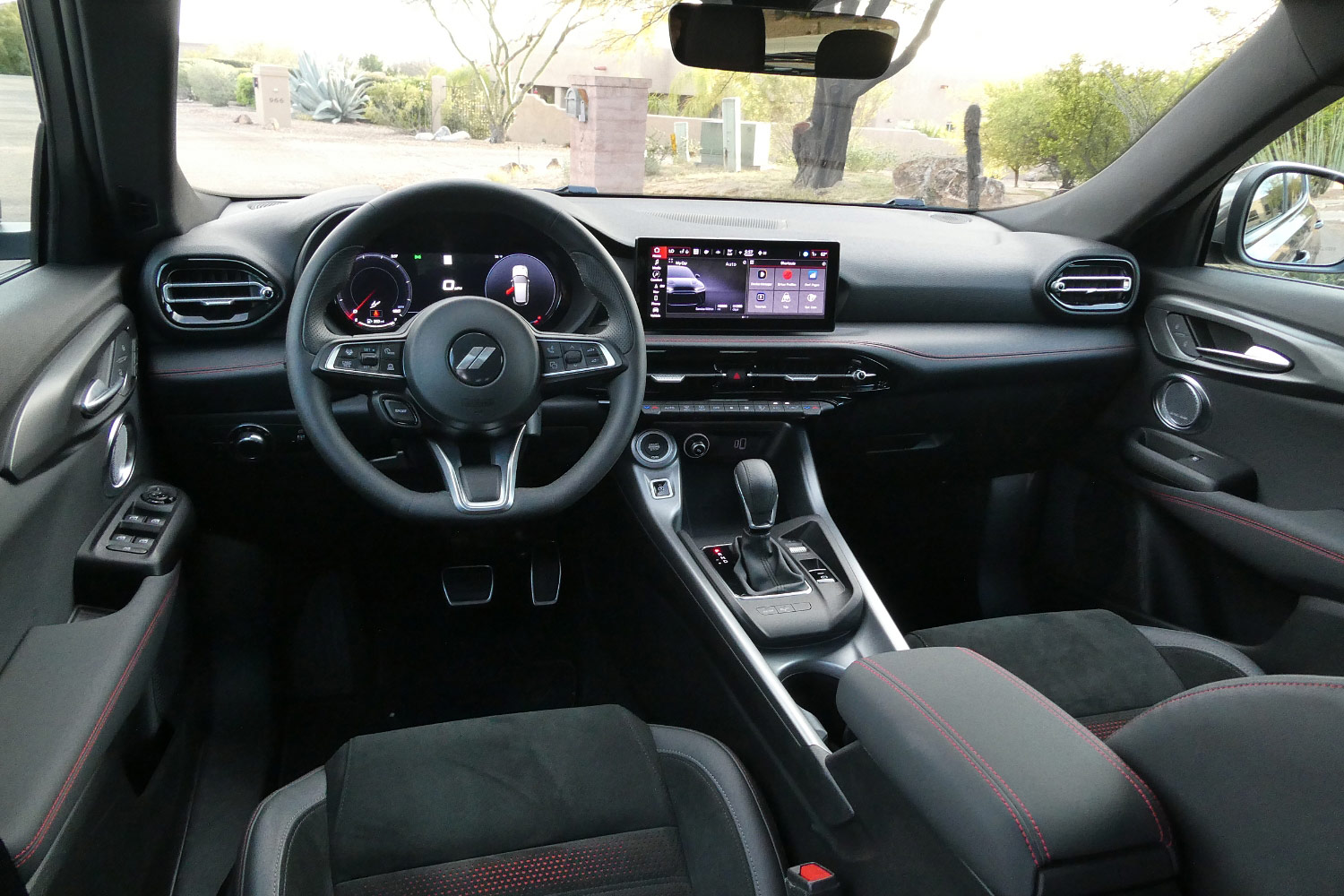 Ron Sessions
Ron Sessions
2023 Dodge Hornet GT: Muscle-Car Flair in an SUV
The 2023 Dodge Hornet takes exterior design cues from the automaker's existing muscle machines: the Challenger, Charger, and Durango. The Hornet's mail-slot grille and functional dual hood vents pull off a Charger vibe, and a wide-mouth lower front fascia emulates the Durango.
Moving to the rear, the Hornet has a hot-hatch look with a roof spoiler, wraparound tail lamps, and a full-width light bar with an illuminated dual-slash Dodge Rhombi logo. There's a lot of surface excitement for such a small vehicle, but it looks appropriate on the Hornet.
The heavily optioned Hornet GT Plus test vehicle's optional Blacktop package upgrades the stock silver-painted 17-inch alloy wheels to black-finish 18-inch ones, and brings black-finish window trim, mirror caps, and badges.
Dodge also fitted my Hornet GT Plus test vehicle with the extra-cost Track Pack. In addition to upgraded exterior trim and dual-stage suspension damping, it adds larger Brembo brakes with red calipers and lower-profile 235/40R-20 Michelin Pilot all-season performance rubber on even larger black-painted 20-inch alloy wheels. The 20-inch wheels help fill the Hornet's large, arching wheel wells and add a high-performance look not often found in compact SUVs.
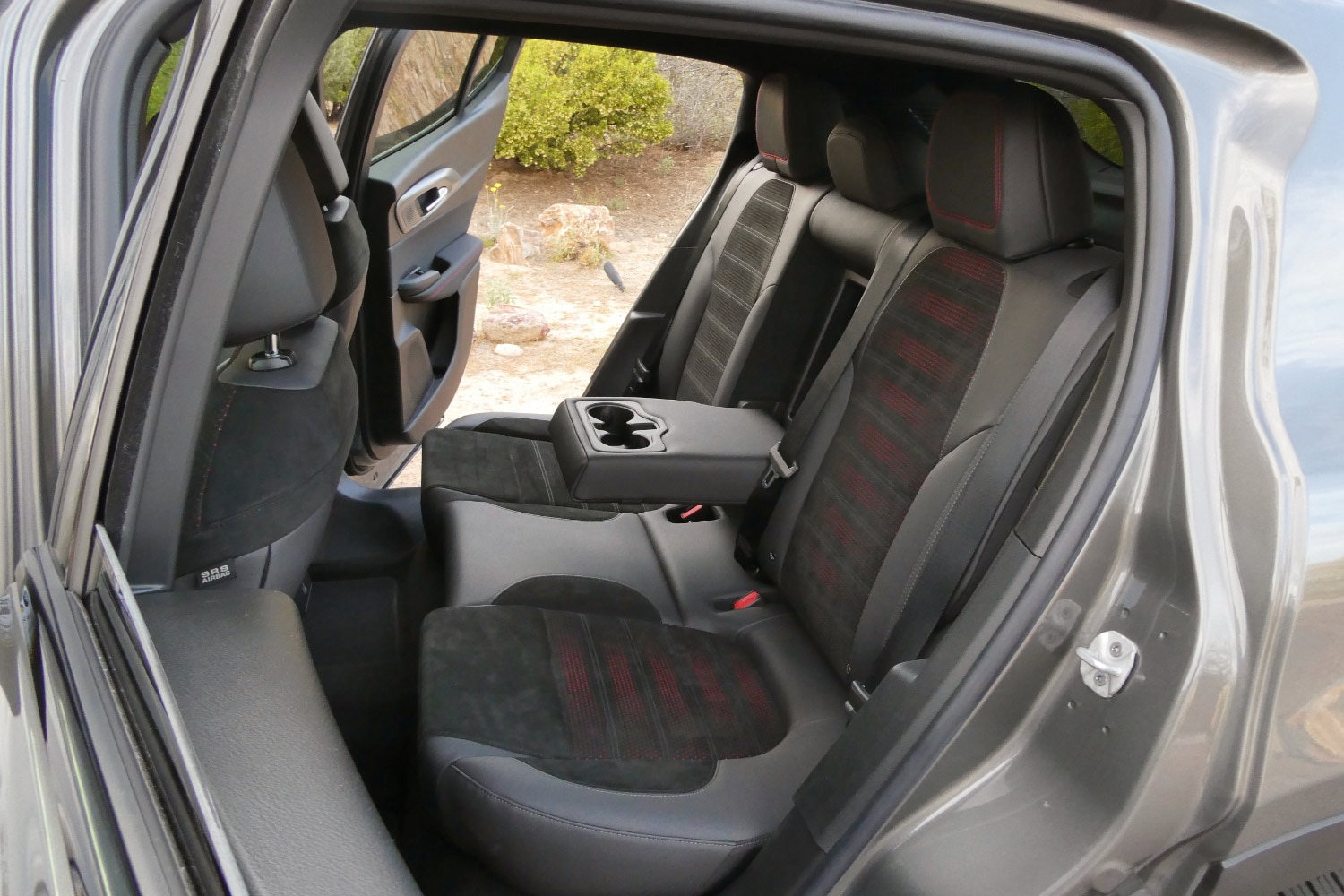 Ron Sessions
Ron Sessions
In the cabin, the Hornet benefits from its association with the upscale Alfa Romeo Tonale. Even in the base GT model, materials feel like a cut above the usual compact SUV fare with abundant soft-touch, padded, and wrapped surfaces on the dashboard, center console, and door trim. Leather covers the shifter and flat-bottom steering wheel, the latter heated in GT Plus trim.
The amply bolstered front bucket seats — heated, ventilated, and power-adjustable in the GT Plus — provide generous thigh and lower torso support. However, the seat cushions are on the firm side. In addition, the GT Plus upgrades from the GT's cloth and artificial leather seat coverings to perforated leather ones. However, my Track Pack-equipped test vehicle switched them for grippy, perforated Alcantara suede.
Moving aft, passengers sit on a flatter bench seat. There isn't an overabundance of rear passenger space, but I could slide my 6-foot-2-inch frame back there without feeling jammed. The rear seatback has a 60/40-split design, a fold-down center armrest with dual cupholders, and a center pass-through door for skis.
The Hornet's thick rear roof pillars and upswept back-door beltline make for a slightly claustrophobic rear seat experience, alleviated somewhat by added rear quarter windows in the doors.
The Hornet features a driver-centric control and display layout, with the center console and infotainment screen angled slightly toward the driver. The 12.3-inch digital instrumentation panel is driver configurable, featuring large, easy-to-read gauges and clear, bright graphics. Seven available display themes change with the Hornet's selectable drive modes. One setting brings the navigation map into the driver display. Switchgear, including the easy-to-use physical controls for the standard dual-zone automatic climate control system, conveys a high-quality, tactile feel.
Storage for the driver and front passenger is passable but not great. There are bottle holders in the doors, a decent-sized glovebox, an adequately sized cubby under the center armrest, and a pair of cup holders on the console. There is a small tray for small items forward of the shifter, but it also functions as a wireless smartphone charger in the GT Plus. Unfortunately, the charger is hard to reach, and larger phones can present a challenge.
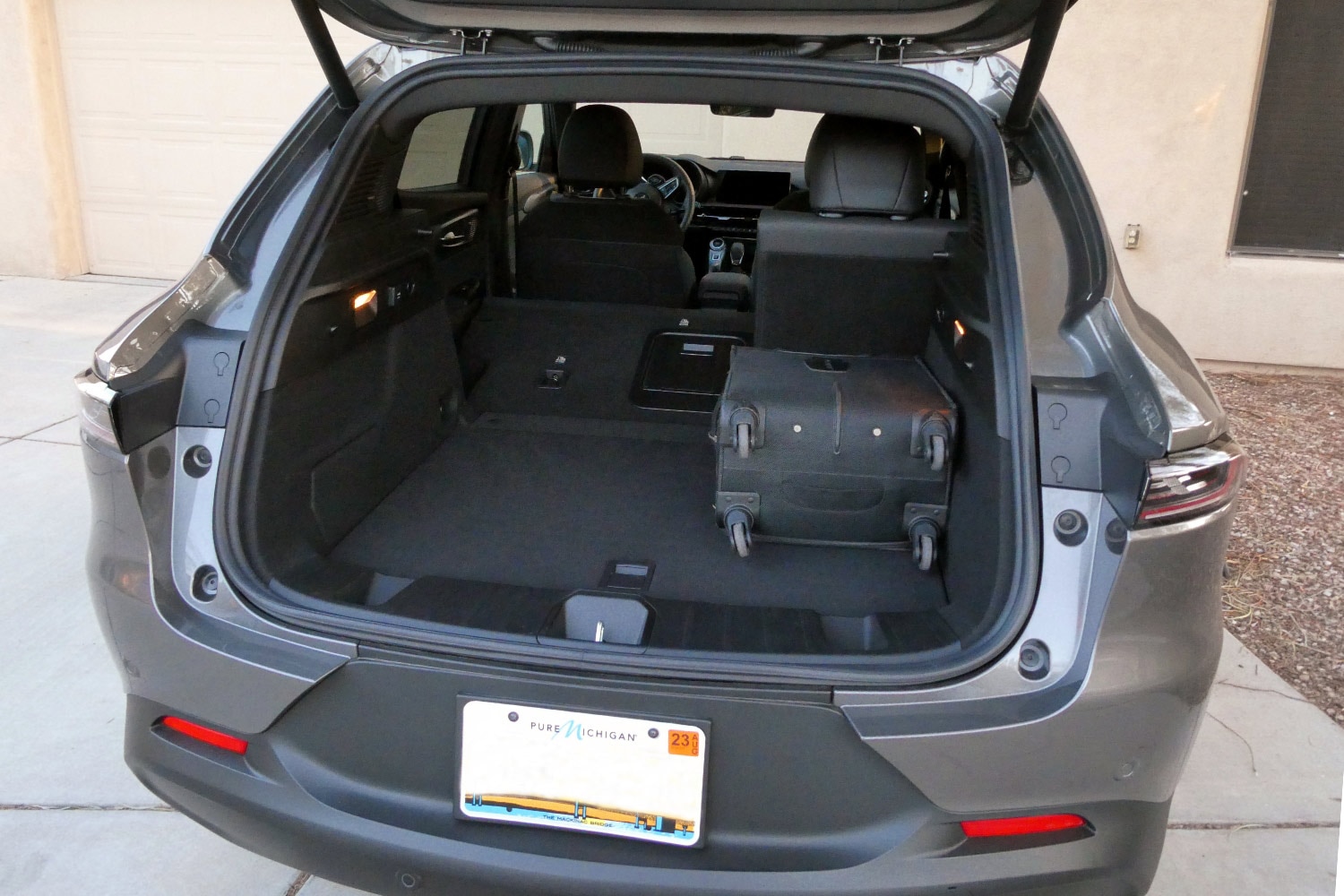 Ron Sessions
Ron Sessions
At 27 cu-ft behind the rear seat and 54.7 cu-ft with the back seat folded down, the Hornet GT's cargo space is more akin to what you'd experience in a small hatchback than a compact SUV. However, there is room for at least three airline roll-aboard bags aft of the rear seat of the GT model.
In addition, there is a generous amount of concealed space under the height-adjustable cargo floor for several briefcases, computer bags, purses, or shopping bags. The GT model has the extra underfloor room because it does not have the plug-in hybrid battery, rear electric motor, and related hybrid electronics of the Hornet R/T.
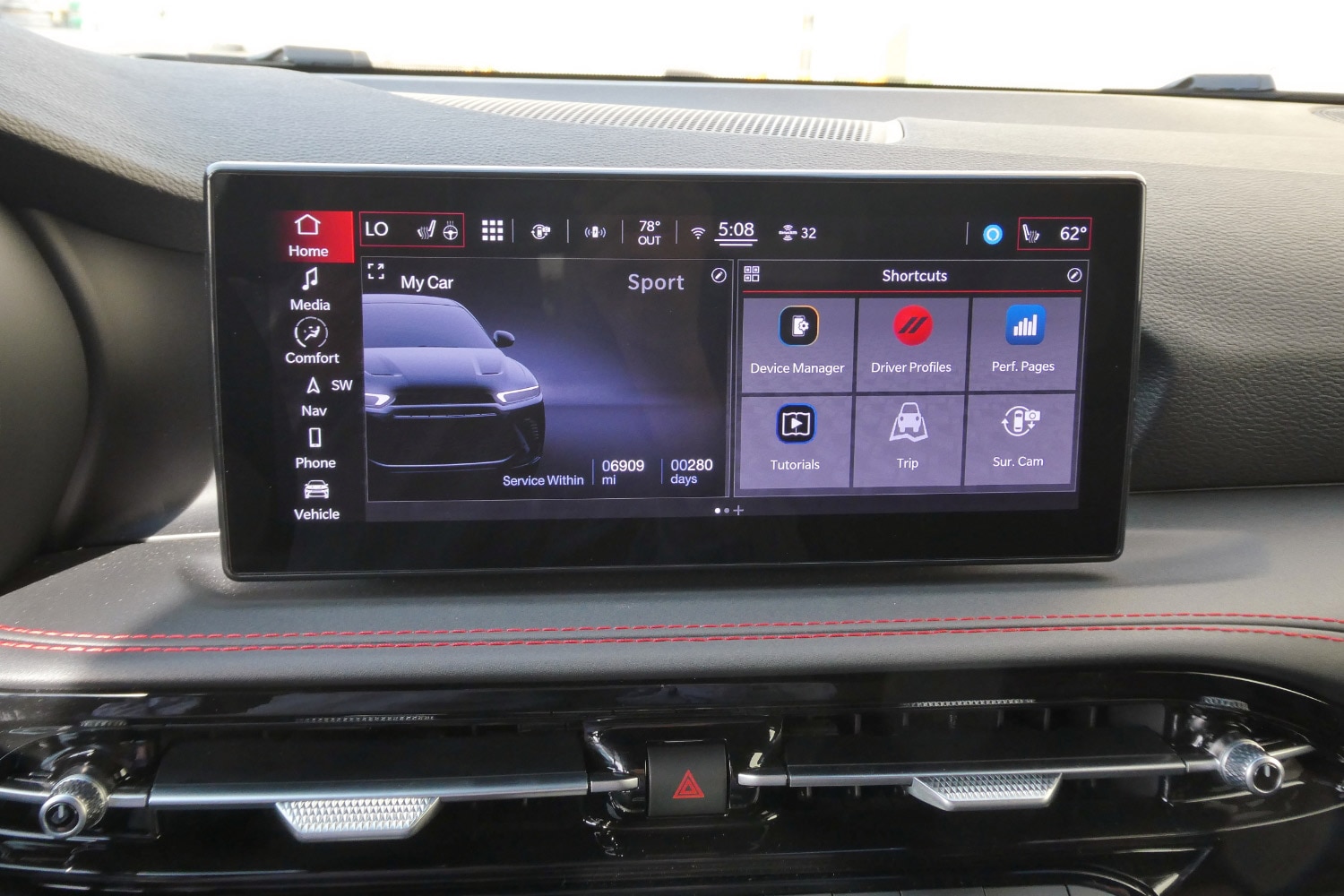 Ron Sessions
Ron Sessions
2023 Dodge Hornet GT: All the Bells, Whistles, and Driver Assistance
The Hornet GT features a standard Uconnect 5 infotainment system with a 10.3-inch landscape-format touchscreen. Highlights include Bluetooth connectivity for two devices simultaneously, wireless Apple CarPlay and wireless Android Auto compatibility, a complimentary trial subscription to SiriusXM satellite radio, and subscription-based services, including access to an in-vehicle Wi-Fi hotspot.
With GT Plus trim, an embedded navigation system is standard and can supply turn-by-turn instructions on the digital instrumentation panel. The GT Plus trim also upgrades the GT's base six-speaker stereo to an immersive-sounding 14-speaker Harman Kardon premium audio system with excellent clarity.
Uconnect 5 is one of the most straightforward infotainment systems to learn and use. It offers bright graphics and gives quick responses to your input. The screen layout is logical, with shortcuts for media, navigation, climate control, and vehicle settings. And if you get lost wandering through onscreen menus, there's a handy "home" button at the upper left of the screen.
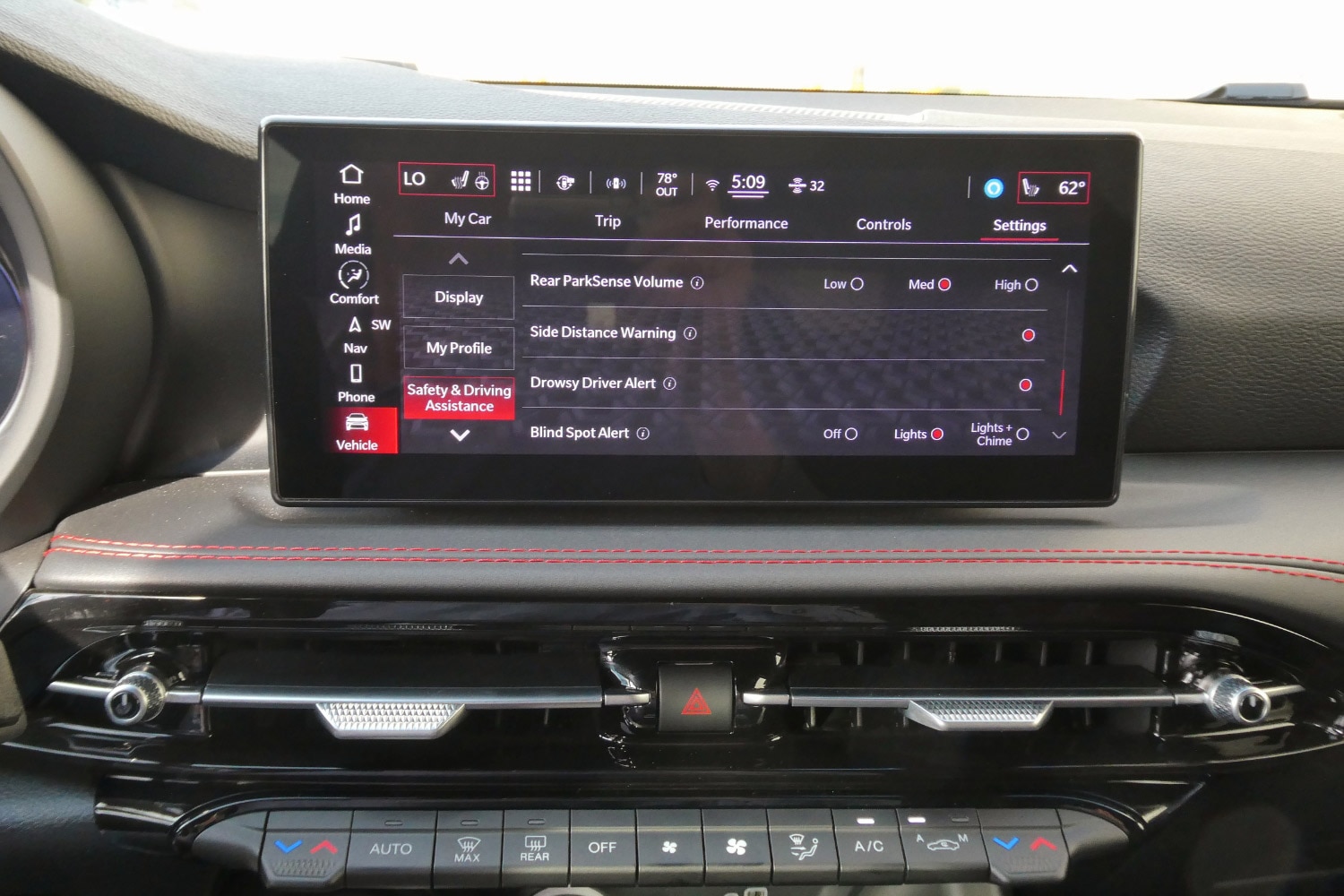 Ron Sessions
Ron Sessions
Setting up Uconnect 5 was easy. The first time I started the test vehicle, the system quickly recognized my Samsung phone, prompted me to pair it, and asked if I wanted to use Android Auto. Unfortunately, the Hornet doesn't have traditional analog rotary volume and tuning knobs flanking the screen. Still, Dodge locates tap-up/tap-down buttons for those functions on the steering wheel, and a volume control roller is on the center console.
The upgraded native voice recognition system in the GT Plus test vehicle quickly responded to my requests to change audio sources or radio stations and adjust cabin temperature. It also gave prompt and helpful responses to finding nearby coffee shops, hardware stores, and other points of interest.
Switching to safety technology, the Hornet GT and GT Plus both feature a segment-competitive roster of advanced driving assistance features. These include adaptive cruise control, forward-collision warning with pedestrian and cyclist detection, automatic emergency braking, lane-departure warning, lane-keeping assist, blind-spot monitoring, rear cross-traffic alert, and automatic high-beam headlamps. Rear parking assist sensors are also standard.
The GT Plus test vehicle's optional Tech Pack installed Active Driving Assist, a Level 2 hands-on, semi-autonomous driving assist system. It bundles adaptive cruise control, lane-centering assist, and low-speed Traffic Jam Assist functions for use on well-marked highways.
The Tech Pack also includes a traffic-sign recognition system, a driver monitoring system that detects inattentive or drowsy drivers, front and side parking sensors, and a 360-degree surround-view camera that replaces the standard backup camera. In addition, the Tech Pack bundle equips the Hornet with a semi-autonomous ParkSense parking-assist system that can steer the Hornet into and out of parallel and perpendicular parking spaces while the driver performs the shifting, accelerating, and braking.
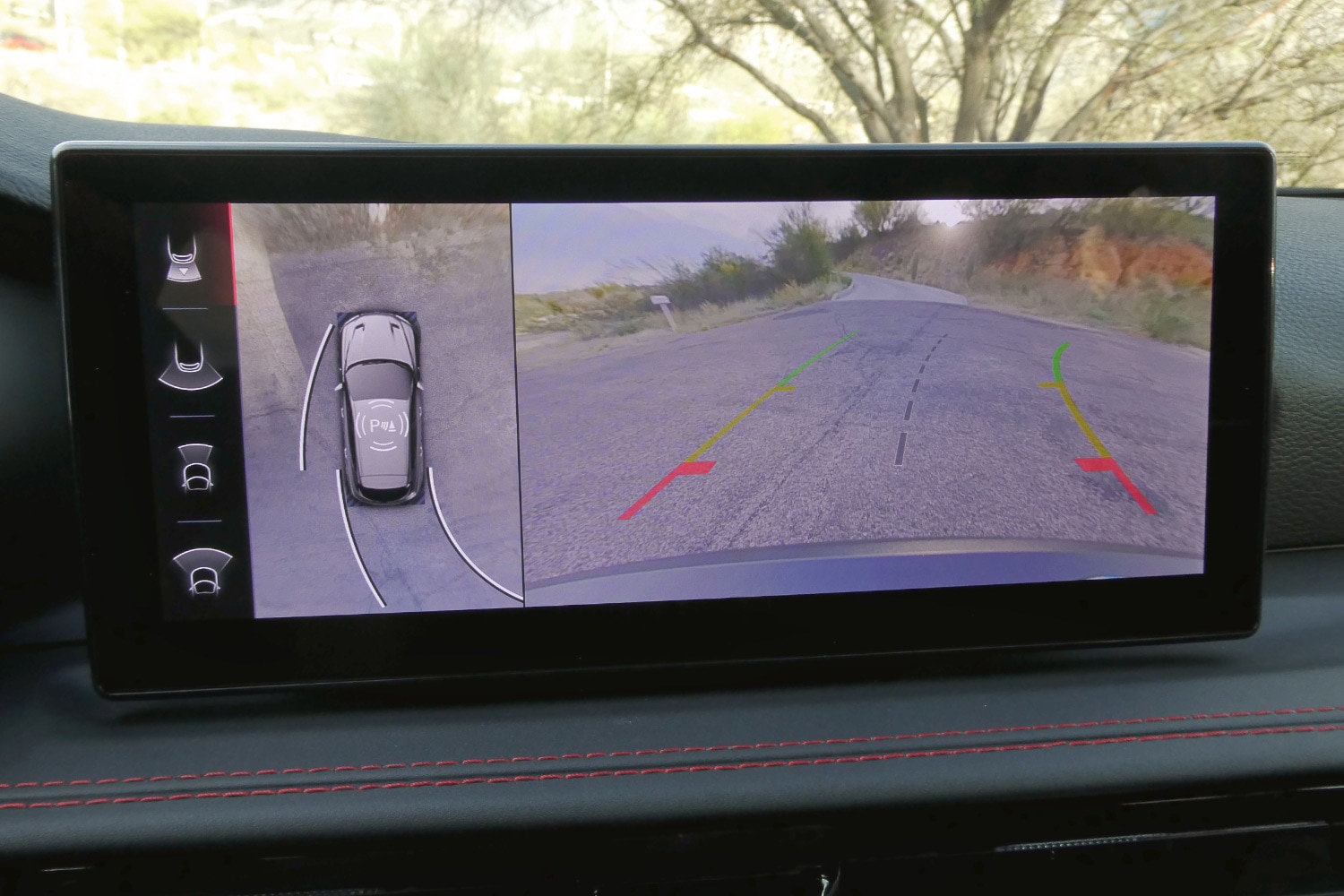 Ron Sessions
Ron Sessions
The blind-spot monitoring, rear cross-traffic alert, and surround-view camera were a big help in dealing with traffic and obstacles hiding behind the Hornet's thick rear roof pillars and sharply angled rear glass. In addition, I found the lane-centering function of the Active Driving Assist system to be slightly less intrusive than similar tech in other vehicles, allowing me to move around in the lane to avoid potholes and road debris without a lot of heavy-handed steering correction. But as with other systems, the Hornet's wants to see well-defined lane markings to function properly and does not like curvy roads.
As of this writing, the National Highway Traffic Administration (
 Ron Sessions
Ron Sessions
2023 Dodge Hornet GT: A Sporty Chassis With Balanced Handling
For the 2023 model year, the Dodge Hornet GT and GT Plus feature a standard turbocharged 2.0-liter four-cylinder engine making 268 horsepower and 295 lb-ft of torque. It teams exclusively with a nine-speed automatic transmission and all-wheel drive, and Dodge says the Hornet GT will accelerate from zero to 60 mph in 6.5 seconds. Based on my experience, the Hornet's acceleration is in the same league as a Ford Bronco Sport with the optional EcoBoost turbo 2.0-liter four.
The Hornet GT is a fun vehicle to drive, feeling more like a hot hatch than a crossover cruiser. Throttle response is excellent, with little to no perceptible turbo lag. The 295 lb-ft of torque is more than ample as the turbocharger builds boost quickly. The GT's powertrain sound is more buzz than rumble, and the company resisted the temptation to enhance the sound using the Hornet's audio speakers.
With nine speeds to choose from, the automatic has plenty of ratios to work with to aid engine performance or fuel efficiency, but the side effect is that the transmission shifts a lot. While spirited, acceleration is uneven, making it hard to drive the SUV smoothly. You can manually shift the Hornet GT using the gear selector on the center console, but steering-wheel shift paddles are unfortunately unavailable.
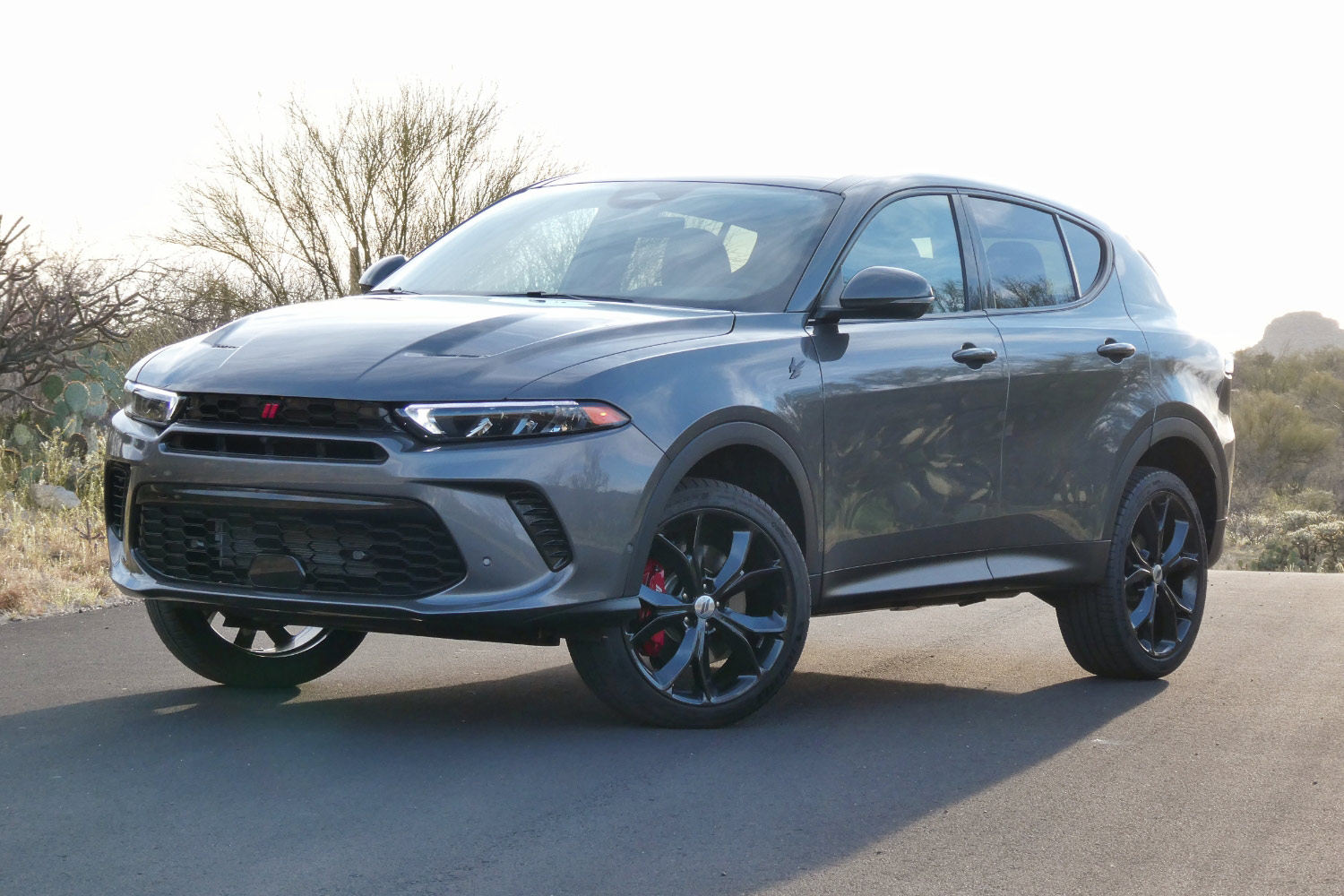 Ron Sessions
Ron Sessions
The 2024 Hornet R/T plug-in hybrid model is due out later this year, and I've also driven that version of the SUV. It offers comparable performance but is more refined to drive courtesy of a belt-driven starter/generator up front and an electric motor in the rear. The electrified Hornet R/T smooths out the dips in torque between gears and makes for a more premium driving experience.
The Dodge Hornet GT is EPA estimated to return 24 mpg. During a week of driving the Hornet GT over city streets, rural two-lane highways, and fast-flowing interstates, it displayed a 25.7 mpg average in the vehicle's trip computer. With a 13.5-gallon fuel tank, that result computes to a modest driving range of just shy of 350 miles. You'll most likely need to stop to fill the Hornet up every 300 miles or fewer.
Far more polished than the GT's powertrain is its sporty chassis. Despite looking jacked up on its tippy toes, the Hornet displays a surprisingly flat cornering attitude considering its somewhat elevated road stance, making driving on twisty back roads rewarding.
 Ron Sessions
Ron Sessions
You can chalk that up to the Hornet's shared DNA with the Alfa Romeo Tonale. The balanced handling starts with a chassis featuring a near-ideal 52:48 front-to-rear weight balance. Next, the Track Pack adds grippy, low-profile Michelin Pilot Sport all-season performance tires. Finally, the GT's electric steering offers satisfying turn-in response and precise control, although road feedback could be better in turns.
In Sport mode, accessed via a steering-wheel button, steering effort increases slightly, and the rear wheels benefit from dynamic torque vectoring, which helps minimize understeer when turning. Select Sport mode, and the Track Pack's adaptive dual-stage dampers firm up, providing improved vertical body control.
When equipped with the Track Pack, the GT's Brembo four-piston fixed brake calipers give the small SUV confident stopping power from speed. In addition, a brake-by-wire setup helps deliver good top-of-pedal response and precise braking control. The Hornet's body structure is also rigid, with nary a squeak or rattle, although the body cavity resonates a bit over coarse road surfaces.
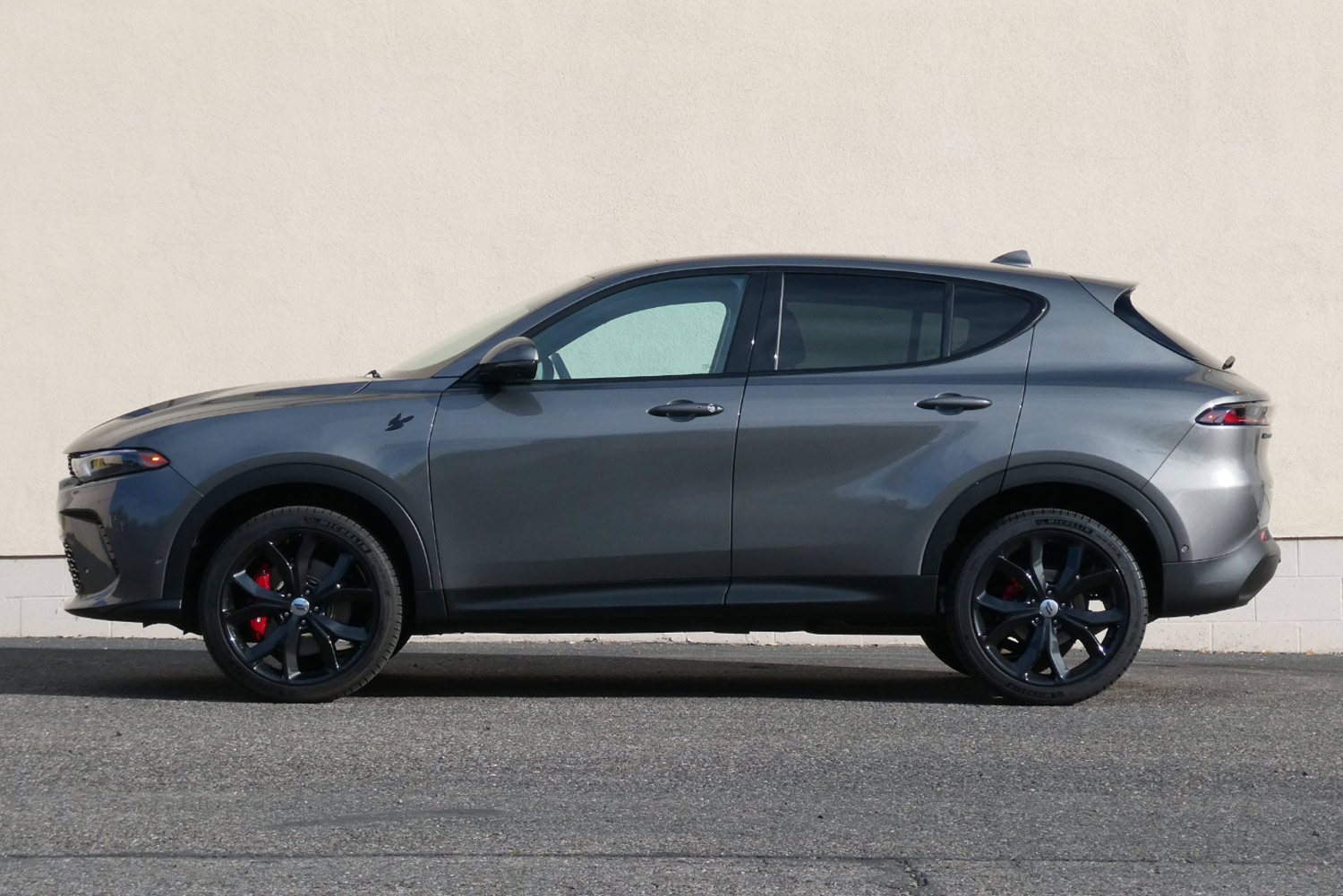 Ron Sessions
Ron Sessions
Is the 2023 Dodge Hornet GT a Good SUV?
The jury is still out on this all-new compact SUV. It's been decades since Dodge had a small vehicle that was a sales success. In recent times, the brand's most memorable and profitable vehicles have been larger ones, often with a rumbling, large-displacement V8 stuffed into the engine bay. But offering a zippy, fun-to-drive compact SUV with flexible cargo space and competitive technology at a starting price in the low $30,000 range is an excellent place to start.
Written by humans.
Edited by humans.
 Ron Sessions
Ron SessionsRon Sessions is a seasoned vehicle evaluator with more than three decades of experience. He has penned hundreds of road tests for automotive and consumer websites, enthusiast magazines, newsletters, technical journals, and newspapers.
Related articles
View more related articles